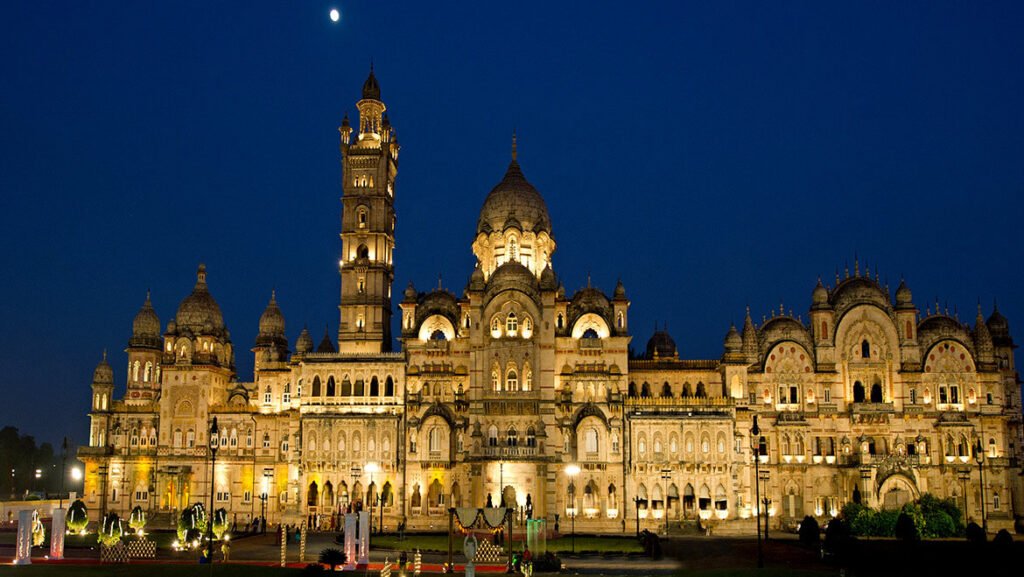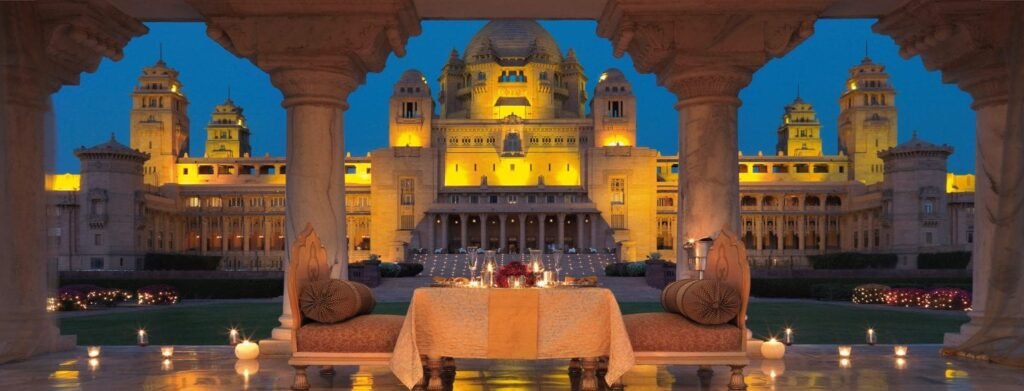It was the ultimate combination of plenty in life and multi-faceted heritage that the Maharanajas of Rajasthan carried.
Standing chivalrous in heart of jaipur, this grand complex of palaces confronts and extends itself as an elongated mix of courtyards, gardens and buildings. City palace complex stands not only as a great architectural wonder but also it represents one rich cultural and historic element of Rajasthan.
Concept of the City Palace
This palace was extended by construction to be converted into a new capital and residence of the Maharaja. A gigantic complex was offered to reflect the wealth, power, and taste of the ruling dynasty. As a matter of fact, it was meant to mark the very center of Jaipur, which is completely steeped in the spirit of Rajasthani grandness.
City Palace Architecture Marvels
Indeed, it was a blend of Rajasthani and Mughal architectural styles, with influences from even European architecture. Intricate buildings, a part of the palace complex, reveal just the perfect use of craftsmanship in each minute detail. From elaborately carved doorways to frescoes to even mirror work, every nook and corner of the City Palace speaks volumes about skilled artisans who made sure the Maharaja’s dream came alive.

The Majestic Courtyards
The City Palace was such an integrally conceptualized idea, devised for courtyards around a series, each independently having their own importance and attraction. Everything was meant for the courtyards, to be built to hold every ceremony in, to relax in, and to boast of the glory of the royal court. A few of them are Peacock Courtyard, Diwan-i-Khas, and Diwan-i-Aam, which independently stand ornamented with minute details reflecting richness in culture at that time.
Grand Entrance
These imposing entrances to the City Palace are much more than the mere gate they sound like, reflecting the grandeur and authority of a Maharaja that he would carry with himself. Amongst them, the one that would be treasured most is probably the Tripolia Gate, opening passage into inner courtyards and private quarters within the palace. These were much more than mere gates and spoke volumes about the glory of the Rajput rulers with their impeccable carvings, paintings, and motifs.
Royal Residences
Royal apartments in City Palace could be termed a blend of luxury and elegance. Gaudy interiors, unfinished mirror work with their ornate decoration give one an idea about the commodious life of the Maharajas. These were residences for comfort and privacy but at the same time symbolized the richness and status of the ruler.
Museum Complex
These form part of the City Palace and reflect in themselves the rich history and culture of Rajasthan. One vast repository after another comprises the complex of royal attire, textiles, manuscripts, and artifacts. These museums have very interesting insights into the life of the royals and the history of the region whereby the visitor gets an opportunity to view works depicting the artistic and cultural accomplishments of Rajasthan over several centuries.
Peacock Courtyard: Peacock Courtyard is generally referred to as Mor Chowk and forms one of the iconic parts of the City Palace. This mainly stands famous for the peacock mosaics prepared from colored glass and stones. The peacocks, speaking of royalty and beauty, stand as one of the best examples of detailed craftsmanship that once flourished under the patronage of Maharajas. It holds a treat for the eyes because many skilled and creative ideas have been put forward by these craftsmen.

Armory Museum: Secret of Royal Warrings
The Arms museum evinces keen interest in displaying the various weapons and armaments that some of the most important types of Rajput warriors once used, such as swords, spears, shields, and many others, decorated with precious stones that have intricate engravings on them. Besides other battle gear and armor that once belonged to the Maharajas and their armies, the armories kept here form part of Rajasthan’s martial traditions.
Chandra Mahal
The most salient building within the compound is the Chandra Mahal. This seven-story building used to be a dwelling of royalty itself and is still a home of descendants of Maharajas. Each of its floors is designed differently, with its unique purpose; moreover, the top floor provides an excellent view over the city. Rich interior decoration with murals, mirror work, and floral designs speaks to the royal great feeling and grandeur.
Mubarak Mahal
The term Mubarak Mahal literally means Auspicious Palace, and this palace was, in fact built to serve as a reception center for foreign dignitaries. This beautiful structure is a perfect example of the fine fusion work of Islamic, Rajput and European styles of architecture. The Mubarak Mahal is an elegantly structured building with exquisitely arched jharokhas or overhanging enclosed balconies and intricately carved stones. The Mubarak Mahal housed various major royal ceremonies and receptions.
City Palace Gardens: The Royal Retreat
The large expanse of the City Palace complex in itself contains within it the presence of silent gardens amidst such a monumental palace. As a matter of fact, they are so planned with tranquil retreats that they would house the royal family in solitude, relishing the beauty of nature surrounding them. Mughal influences can be traced directly in the development, with well-manicured lawns, fountains, and floral arrangements. The entire place stands proof to the fact that nature had an unparalleled significance in the royal mode of living.
Legacy of City Palace: It is no monument but a living memory, an epitome of rich cultural heritage pertaining to Rajasthan. Efforts are made persistently in order to save this architectural marvel for the next generation. Even today, it attracts tourists from every part of the world for entertainment. Thus, it is equally significant both culturally and economically to Jaipur. Ongoing restoration work has kept the legacy of the City Palace alive, and that has made one feel the glory of the royal history of Rajasthan.
Conclusion
City Palace of Jaipur is an architectural genius. With time, it has come to be identified with the royalty of Rajasthan. Indeed, minute art, large courtyards, and posh residences do give a glimpse into the lavish living of the Maharajas themselves. It stands today, even at the turn of this millennium decade, as a monument to culture and history, impressing on its visitors the grandeur and beauty of this place. The restorations within this magnificent structure ensure it keeps forming a part of the diverse cultural tapestry of India.




